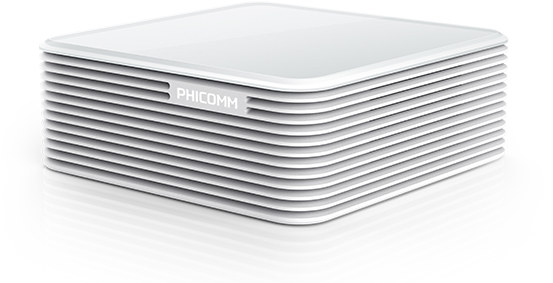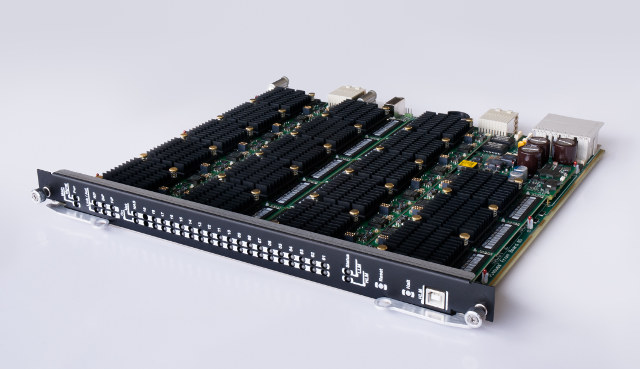I like to look at new hardware platforms supported by Linux mainline, and recently covered MapleBoard MP130 SBC which I found in Linux 5.0 changelog. Today, I had a look at another device. Phicomm N1 is an Amlogic S905D powered TV box running Android 7.1 with a user interface geared towards to the Chinese market. Nothing that interesting so far, but a topic on Armbian forums made it more interesting as the box comes with a larger heatsink than most other cheap TV boxes, a 12V/2A power supply which should allow you to connect several USB hard drives, and potentially more importantly, it became popular among Chinese users, with the community releasing several Linux based distributions for the device including CoreELEC, LibreELEC, Alpine Linux, CentOS, Debian, Deepin, ArchLinux Arm, and more. Phicomm N1 hardware specifications: SoC – Amlogic S905D quad core Arm Cortex-A53 processor @ 1.5 GHz with Arm Mali-450 […]
Scaleway Provides Dedicated ARM Servers for 10 Euros per Month, 0.02 Euro per Hour
Earlier this year, Online Labs launched a beta hosting program using custom-designed C1 dedicated servers powered by Marvell Armada 370/XP quad core processor. The company has now launched a commercial service called Scaleway providing hosting service on these baremetal servers for 9.99 Euros per month, or 0.02 Euro per hour, as well as a “Infinite Storage” service with 1GB data for 0.02 Euros per month. Here are the details of the 10 Euros plan: Server based on Marvell Armada 370/XP quad core ARMv7 processor Memory – 2GB Memory Storage – 50GB SSD Disk 1x Reserved public IPv4 200Mbit/s – Unmetered bandwith Operating Systems – Ubuntu, Debian, Fedora, ArchLinux ARM. Docker supported. That’s not a VPS, but a dedicated server. For reference, I currently pay around $20 per month (Linode) for a server with an Intel Xeon E5-2680 dual core processor with 2 GB RAM and 50 GB SSD storage, and 3 […]
Freescale i.MX6 Resources: Development Boards, Documentation, Source Code and Tools
Reader “Mark” recently left a comment saying the NDA on Freescale i.MX6 resources was lifted and documentation and source code were now available for the platform. So it’s time for me to look into it, and provide an overview of Freescale i.MX6 features, list available development platforms, and have a closer look at the documentation, source code and tools for the platform. Freescale i.MX6 Processors In 2011, Freescale initially announced 3 processors in the i.MX6 series for consumer, industrial and automotive markets, but added 2 lite SoC in 2012, and there are now 5 members in the family: Freescale i.MX6SoloLite – Single Cortex A9 processor up to 1 GHz with 256KB L2 Cache, 32-bit DDR3 and LPDDR2 memory support, and 2D graphics accelerator (Vivante GC355 + GC320) Freescale i.MX6Solo – Single Cortex A9 core up to 1 GHz with 512KB L2 Cache, 32-bit DDR3 and LPDDR2 memory support, and 2D & […]
Raspberry Pi Releases Arch Linux SD Card Image
The Raspberry Pi Foundation has just announced the release of Arch Linux for the Raspberry Pi. This image is based on a minimal image of Arch Linux and does not come with a graphical interface. This distribution may not be suitable for beginners and you may be better off using the Debian SD Card image or even the upcoming Fedora 14 Raspberry Pi Remix image. You can always install extra packages with Pacman, the Arch Linux package manager. To update the package list:
|
1 |
pacman -Syu |
To Install LXDE Graphical Interface:
|
1 |
pacman -S lxde xorg-xinit xf86-video-fbdev |
To run LXDE:
|
1 |
xinit /usr/bin/lxsession |
You can download it using BitTorrent: archlinuxarm-01-03-2012.zip.torrent (preferred method) or via one of the HTTP mirrors: archlinuxarm-01-03-2012.zip. (This link will redirect your download to the closest available HTTP server). The default login credentials are: root/root I haven’t tried it, but you should be able to use this release in qemu, by following instructions similar to the one […]






